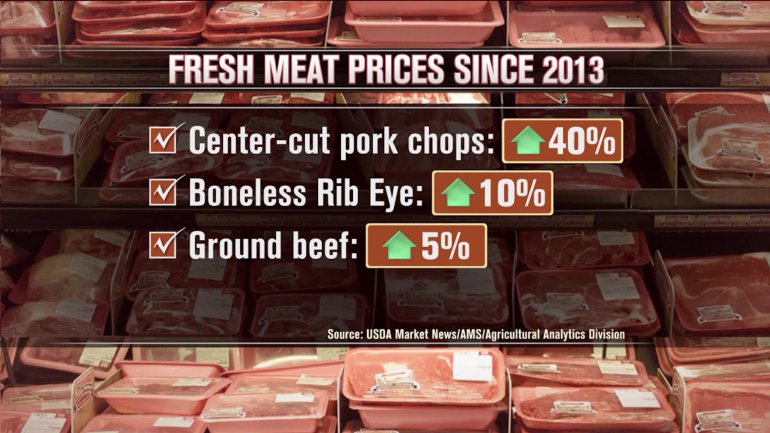(Reuters) – Retail prices for many U.S. meats, already at record highs, continue to rise on a combination of drought and disease, but overall food cost increases remain near long-term averages, the U.S. Department of Agriculture said on Monday.
The agency now forecasts pork, beef and veal prices to rise by 6.5 to 7.5 percent in 2014, up from 5.5 to 6.5 percent forecast a month ago. The overall “meats, poultry and fish” category will rise by 4 to 5 percent.
Overall U.S. food inflation – items bought in grocery stores and in restaurants – will be 2.5 to 3.5 percent in 2014, in line with historical norms, and is expected to be slightly lower at 2 to 3 percent in 2015, the USDA said.
Since 1990, U.S. grocery store prices have risen by an average of 2.8 percent annually.
The agency said that although food-at-home prices increased more in the first half of 2014 than in the whole of 2013, the lower prices outlook for commodities such as corn and soybeans, as well as rising animal inventories, should provide relief.
Record high pork prices are partly due to the impact of a virus that has killed millions of piglets, as well as the higher cost of pork imports from Europe. For this year through July, retail pork prices jumped almost 11 percent.
Meanwhile, the lowest U.S. cattle inventories in more than 60 years are expected to drive up wholesale beef prices by 10 to 11 percent this year, with much of that increase passed down to consumers.
“The ongoing drought in California has raised concern over rising produce prices.
However, the California drought has not yet had a discernible impact on national prices,”
the USDA said.
Much of California remains in an “exceptional” drought according to the U.S. drought monitor, produced by the National Drought Mitigation Center at the University of Nebraska-Lincoln, USDA and the National Oceanic and Atmospheric Administration.
Fresh fruit and fresh vegetable prices both fell in July, the USDA said. In the summer more produce is purchased and consumed from nearby locations and is often less expensive because of lower transportation costs.
Fresh fruit prices are still expected to increase by 5 to 6 percent in 2014.



